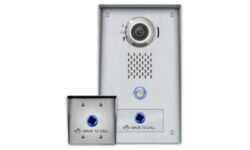How to Operate a Central Station During a Pandemic
Without question, the short-term effects of COVID-19 will be difficult to overcome, and the long-term effects will be difficult to foresee. Here are tips for maintaining the status quo.

We are now about two months since the outbreak of the COVID-19 coronavirus was deemed a pandemic. Who would have thought on New Year’s Day, a day traditionally reserved for optimism, that in just a few weeks our lives would be forever changed?
Many of the trade shows that we depend on have either been cancelled or moved, some more than once. Projects planned or already on the books for completion have been cancelled. Dealers are scrambling to keep people working as consumers are increasingly reluctant to have anyone enter their homes or businesses.
Many are laying off trusted employees. The costs have been high; future investment will likely suffer. Without question, the short-term effects of this event will be difficult to overcome, and the long-term effects will be difficult to foresee. This is going to shake the security alarm industry pretty hard.
Central station monitoring, long viewed as a rock-solid component of the alarm industry, has not escaped the effects of the pandemic. Despite standing as an “essential business,” it has had to make difficult and expensive decisions, converting to work-at-home staffing and remote connectivity technologies, as well as dealing with many other technological challenges we have never had to accommodate before.
So far, at Rapid Response, as with many others in the monitoring industry, we have risen to the challenge adopting a variety of strategies to manage the COVID-19 situation as it evolves.
People are the core of monitoring. Yes, there is a lot of technology inside, but it doesn’t walk in on its own, doesn’t run itself, doesn’t take care of itself and doesn’t fix itself. For that, you need frontline people processing alarms and keeping infrastructure online around the clock.
And, while it may seem obvious, given the nature of our business, we now have to reconfigure our ability to keep our own people safe and, at the same time, convince them that we take their safety seriously and have done everything we can to ensure their good health and that they can continue working toward the safety of others.
This includes moving to work-from-home strategies, keeping people in centers spread out, cleaning everything around the clock, taking temperatures of staff members routinely, implementing new software to streamline alarm processing and much more. For our central station employees to feel safe and to work at the highest standards, we cannot claim a normal day, but we have to make it seem like one.
At the same time, we cannot neglect the mainstays of professional development such as hiring, training, vacation scheduling, reviews, drug testing and licensing. Among other things, that means learning how to do interviews via video, training remotely or using smaller class sizes and developing a completely new scheduling paradigm to account for radically different traffic patterns. All of this has had to be done in a matter of days, not months or years.
The technical support department has a whole new set of challenges and requirements because not only do they have their normal responsibilities, like software development, patch management and upgrades, but they have had to figure out how to support, not just professional staff in the sales and accounting departments, but all or part of the entire operations support departments working remotely from home.
The scramble was on to get computers, headsets, phones and monitors all “kitted up” and ready to go, and they had to support the deployments of the various staff members. That’s a huge undertaking that most companies would take many months to plan, implement and complete — it was done in just a few weeks or less.
We are not alone. Overall, most central stations have had their hands full just getting ready and adapting to the new normal, but the entire effort has not transpired without new and unexpected problems arising that affect our remote workforces. There is no single answer to questions like, what happens when your remote workforces have power outages or regional Internet providers have outages?
Those are problems that rarely, hopefully, present themselves in central station monitoring centers because critical systems are most often redundant. Still, while most of these problems have solutions, right now, and that is our operational timeframe these days, those solutions are in uncharted waters we all have to navigate in real-time.
We have also had to comply with numerous government-mandated practices like sheltering-in-place, new requirements to wear masks while outside your homes and more. Fortunately, our various state and national trade associations, like the SIA, TMA, ESA and CAA, all went into overdrive to get our industry classified as “essential,” so employees could get to work and provide service at their facilities during the COVID-19 crisis.
This, in and of itself, burned up a lot of hours but also called in a lot of favors at state and federal levels for the benefit of all. It’s worth noting that difficult times can reveal the true value of things we take for granted — if you question the value of trade associations, this was a good example of why they are necessary and provide excellent value to the industry.
Overall, I think we will come out of this with a whole new set of learning experiences, tools, technologies, adaptive processes and respect for problems we cannot foresee. It will also generate some new opportunities and has already allowed many centers to develop and deploy new ways to communicate and to share.
I believe this experience will also make us better aware of the value of tools we already possess. ASAP-to-PSAP, for example, not only eliminates mistakes but also saves huge amounts of time and reduces costs at PSAPs, and we should take from the events of the day the need to continue to push the adoption of that very valuable tool.
Above all, for an industry that has changed so much and so fast, in these times especially we must remember that if you are not moving ahead you are falling back. I’m confident that soon enough untroubled days will return, and we can once again focus on what’s ahead.
If you enjoyed this article and want to receive more valuable industry content like this, click here to sign up for our FREE digital newsletters!

Security Is Our Business, Too
For professionals who recommend, buy and install all types of electronic security equipment, a free subscription to Commercial Integrator + Security Sales & Integration is like having a consultant on call. You’ll find an ideal balance of technology and business coverage, with installation tips and techniques for products and updates on how to add to your bottom line.
A FREE subscription to the top resource for security and integration industry will prove to be invaluable.








